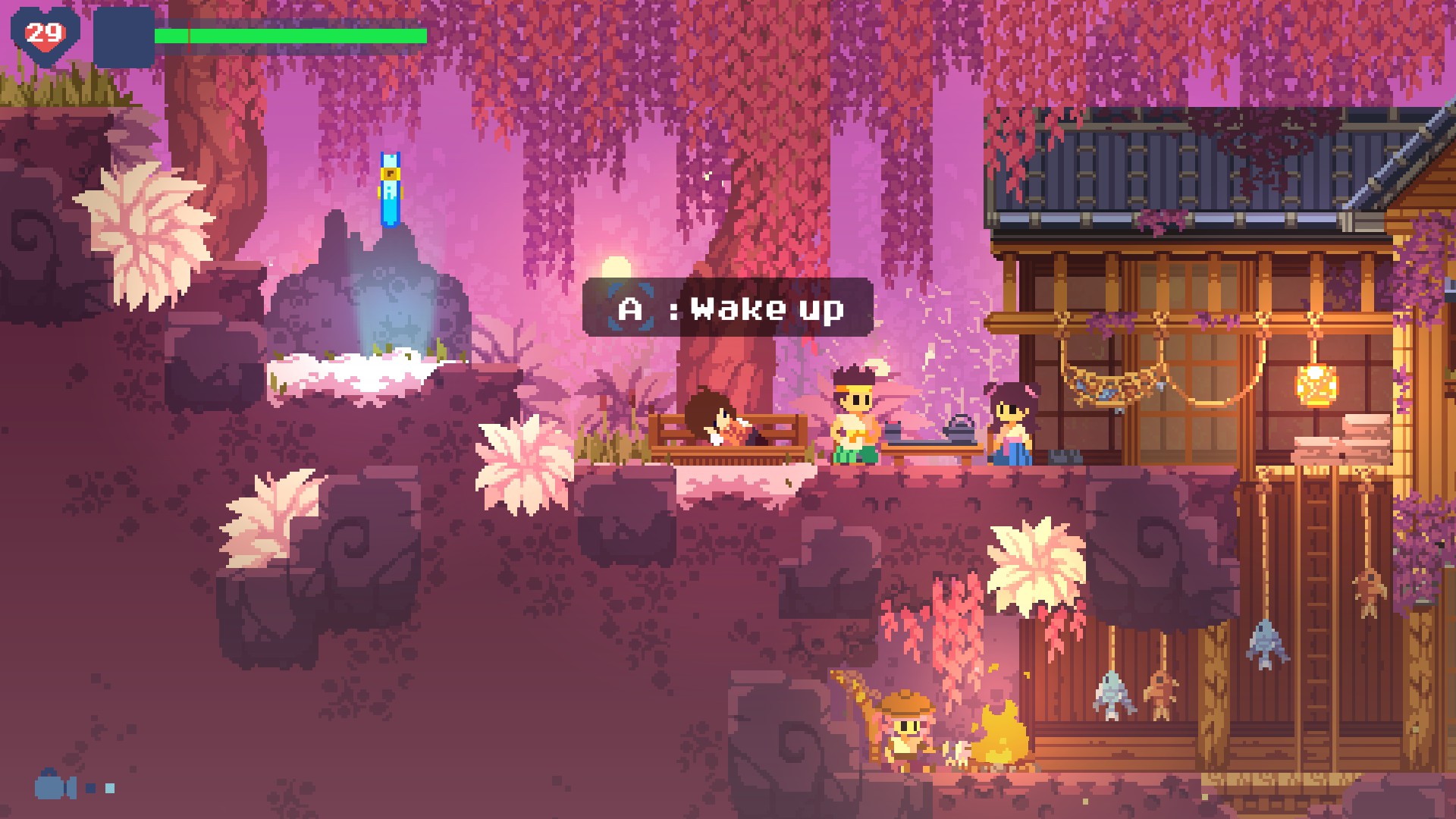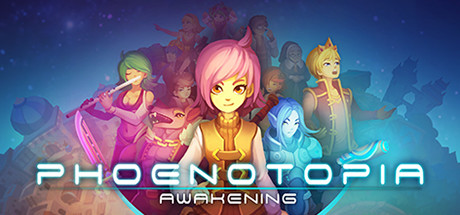This remake of a free game from 2014 has great visuals and an interesting story. However, with clunky controls and other noticeable flaws, it doesn’t present a strong case for why gamers should buy it.
Type: Single-Player
Genres: Exploration, Platformer
Developer: Cape Cosmic
Publisher: Cape Cosmic, Flyhigh Works
Release date: 21 Jan, 2021


First Impressions
When looking into Phoenotopia: Awakening (PA), I saw people mention that it was a remake of a free Flash game, one which I hadn’t played before. That was launched mid-2014, and with Flash fading away, that may have inspired the developer to recreate that game for Steam. Looking at the trailers and reviews, it looked like a charming Metroidvania, and with a few years of experience and feedback to work off of, I hoped for an experience that would have buffed out any rough spots. Unfortunately, my mood soured with this game pretty quickly, and I lost interest in spite of the interesting premise.
Gameplay
There appears to be some discrepancy on how people would describe PA, whether it is or isn’t a Metroidvania or if it’s more of a Zelda II kind of game. Personally, I see it as a platformer that emphasizes exploration, dungeon-crawling, and speaking with NPCs, which is what I expect out of most indie adventure titles. However it’d be categorized isn’t of much concern to me, as it doesn’t change the experience, which on the surface level covers the checklist of things to include in a good game, but not in a well composed way. For instance, I’ve grown accustomed to chatting with every NPC I can a handful of times, happy to learn more about the surrounding area, relevant history, rumors going around, and potentially pick up a quest. In PA, the processing of events seems to be fixed and linear, so that a specific NPC has to be spoken to first to trigger another one’s dialogue option, which opens another possibility, and so on. This leads to backtracking and doing things rigidly, instead of allowing for more organic exploration and advancement in the game.
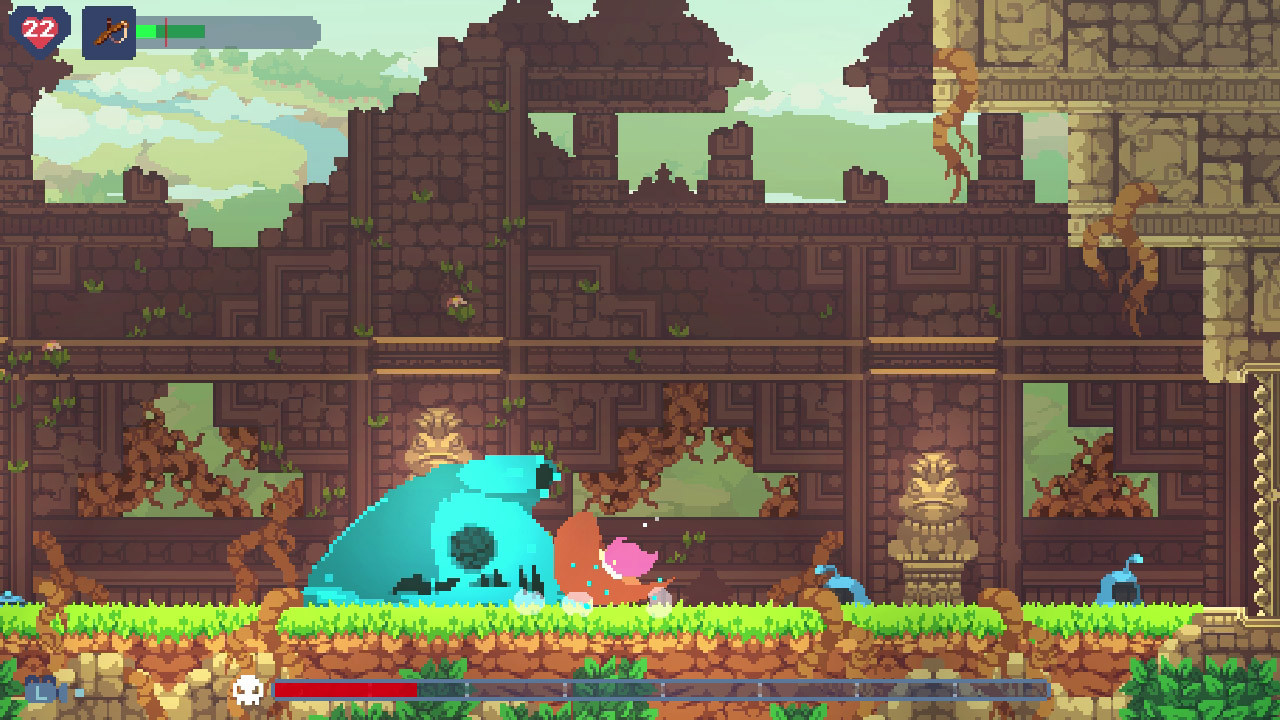
However, what I disliked most with PA was the game’s combat system, which is a common complaint amongst the negative reviews. If you play PA with all combat modifiers turned off, which I see as being how the game is intended to be played, swinging the bat drains stamina, even when only breaking boxes. Worse than that though, almost every action you’d take is based on this stamina bar: dodge-rolling, sprinting, throwing bombs, hurling rocks with a slingshot, etc. Your options in combat are limited, as all of them revolve around the same resource, stamina. You don’t have a number of arrows and bombs that can be used as you see fit, using one of these draws from the same pool as the close-range melee attack. The only ones that don’t rely on stamina are basic movement, jumping, and eating to heal. Instead of being able to approach fights with a handful of options I can switch between on the fly, it’s best to attack from a distance and jump or walk back as necessary, because getting in too deep is very disadvantageous.
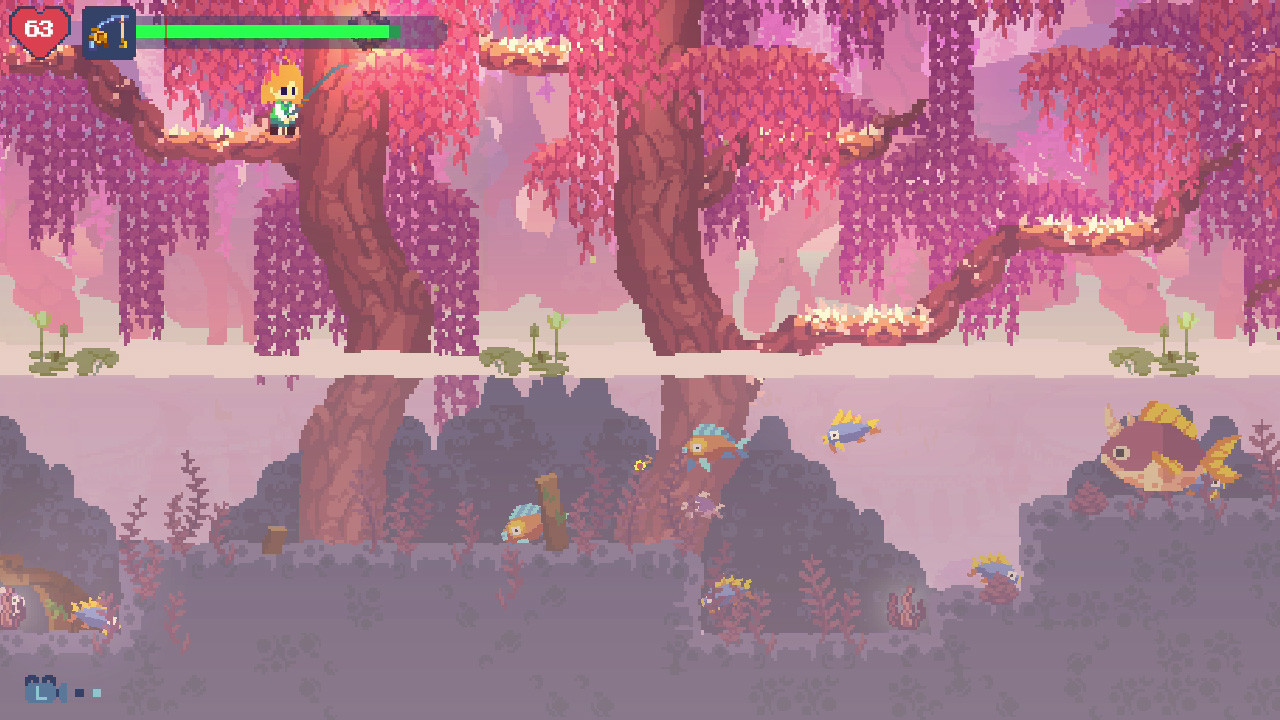
Controls
The control scheme gets fairly complicated in PA, so I won’t offer a breakdown of them in this case. However, this in part is an issue I have with the game, as I don’t think it was designed as ergonomically as it could have been. An example of this is the sprint mechanic, which isn’t treated as a faster movement cycle you switch to when you’re wanting to hoof it. Instead, it’s like hitting the melee attack button, as Gail will sprint a certain distance after you hit the button, and you can’t hold it down to make her run faster. Its primary use is for making longer jumps or dodge rolling, which you do by hitting the right button after you’ve hit sprint. It works, but it’s not as satisfying as just having normal control over the PC’s speed.
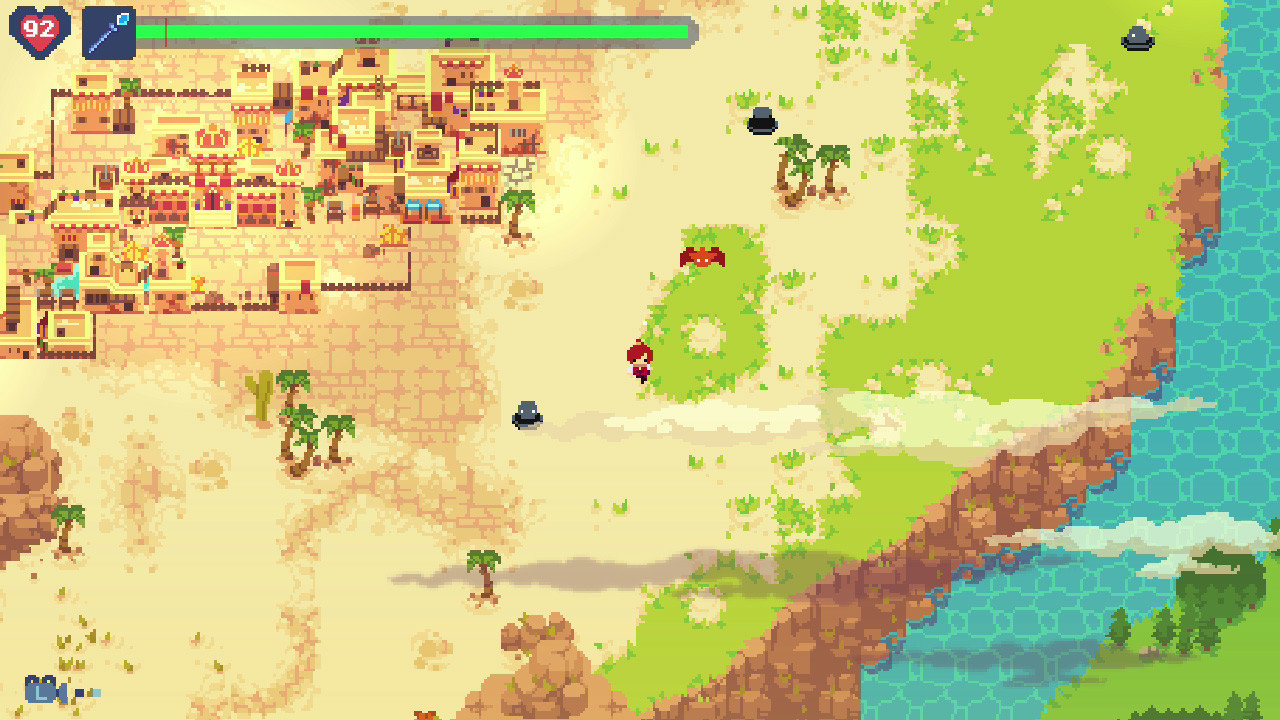
Story
As the game begins, Gail rounds up the children of the village and dives into a nearby temple to check out a meteorite that fell nearby. Upon discovering what it is and starting to head back home, an alien saucer swoops in and kidnaps all of the adults, leaving behind only the children. It’s simple and straightforward, but this is a good hook to establish the plot of PA, as there’s important, personal stakes on the line so the PC has an incentive to go on her quest. With so few things explained about the situation, players have enough room to speculate and guess what’ll happen, as Gail heads out to follow the few leads available and try to find and rescue the kidnapped villagers. By the time I was quitting on the game, I wasn’t wanting to read the dialogue further, but that was because I had lost interest in PA itself, not the story and circumstances of the characters. I’m curious how it all pans out, yet won’t finish the game to find out for myself.
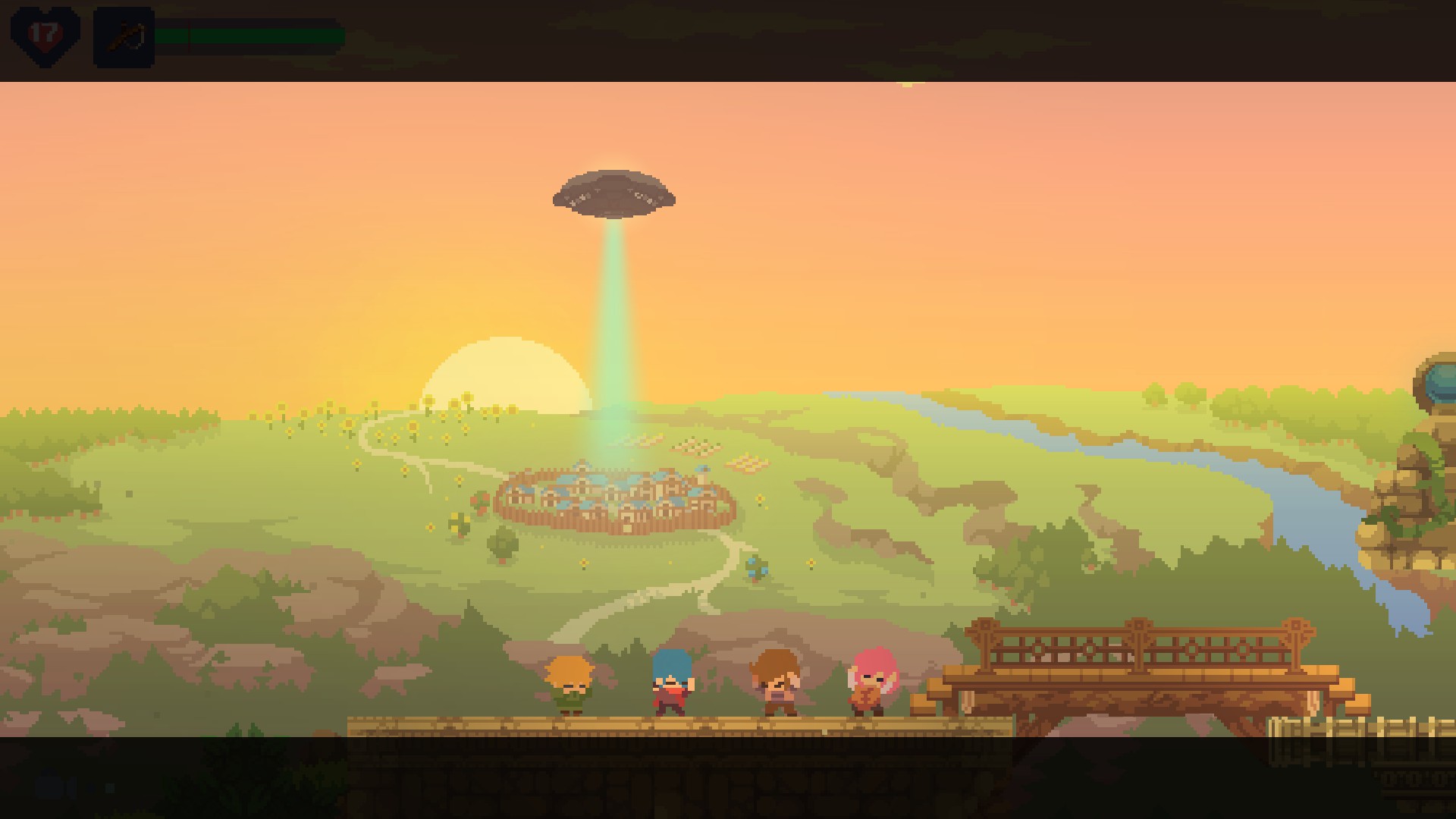
Graphics
This is another example of an indie game that has great visuals, as I find the pixel graphics of PA vibrant and detailed. It’s easy to determine what items are in environments, settings don’t look tired and repetitive because the backgrounds have enough variance to look organic, and the layered environments give areas a sense of depth. Out of the graphics, the area that falls flat for me is the character models, as I find them easy to mix up. Were it not for such flashy hair colors, I think it’d have been harder to distinguish them apart as much.
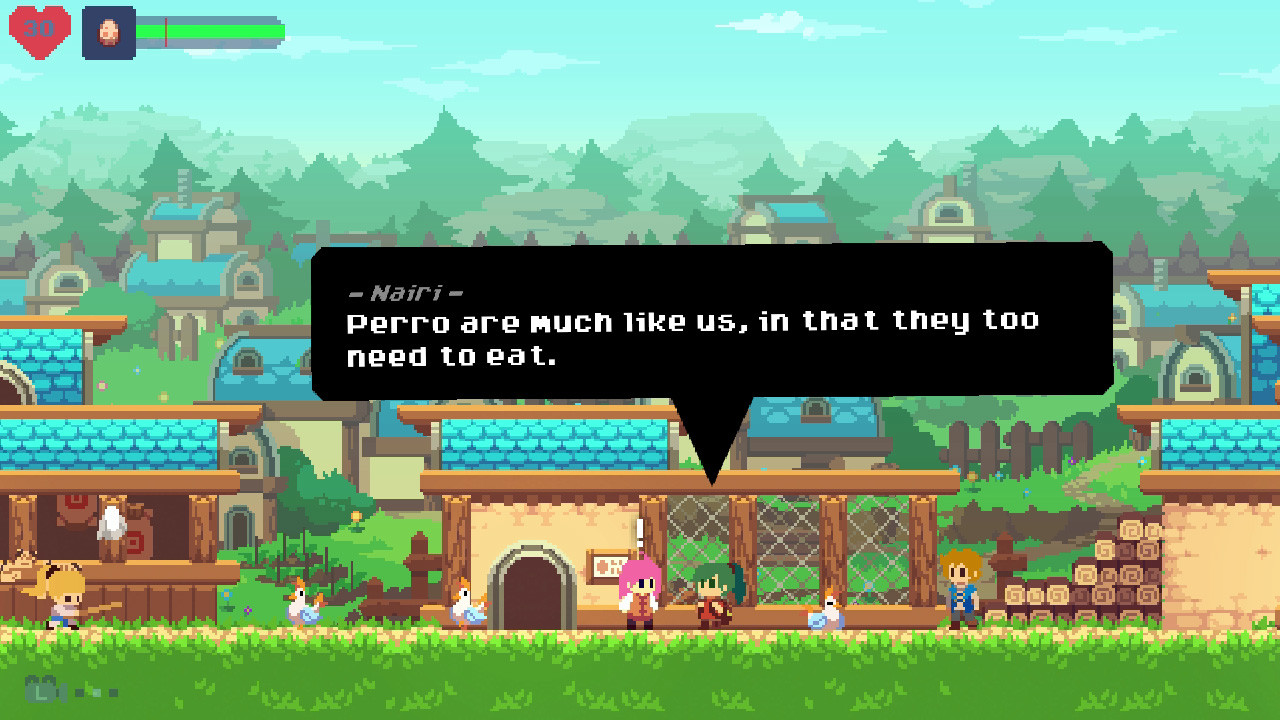
Sound Design
When listening to PA’s soundtrack, I’d say it’s well composed. It covers a broad range of tones and tempos, which helps build different feelings about the environments Gail travels to. I’m a fan of instrumental music, so I can easily slip into it and enjoy myself. A simple downside is that many of them aren’t very long, so they loop upon themselves fairly quickly.
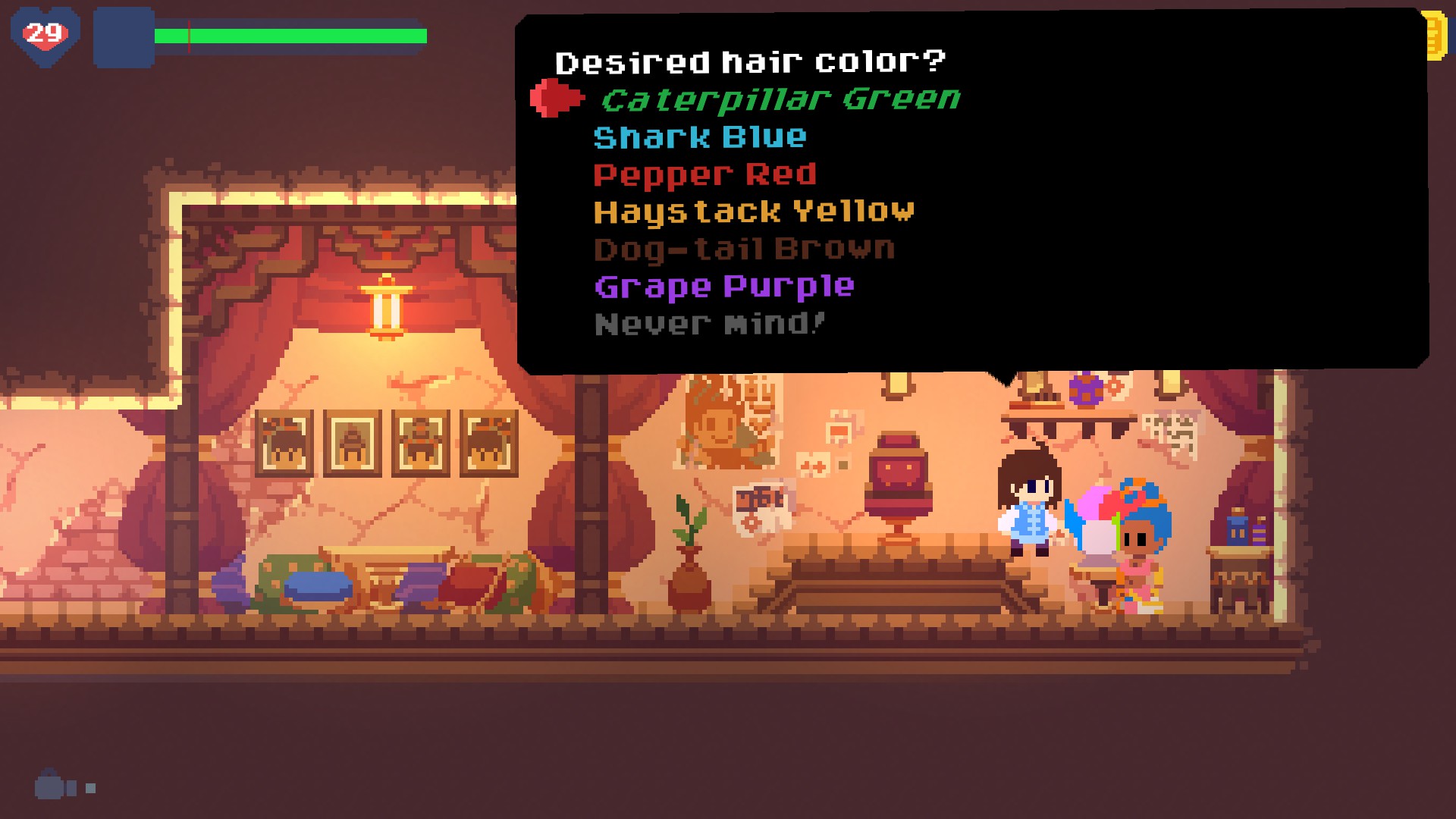
Pros
- There are gameplay options that can be turned on and off to adjust the difficulty, to some extent. You won’t be able to increase your HP or weaken enemies though.
- I found the visuals and story went well together, which both drew my interest in the first place and held my attention as I played.
- Based on the progression stats from the loading menu, there’s quite a few secrets to hunt down.
Cons
- Another problem in combat stems from how getting hit by an attack momentarily stuns the PC, and can lead into being juggled for multiple hits with no ability to dodge or respond. You’ll only get invincibility frames after getting hit 3 times in a row, and with a starting HP of 30, a sizable chunk can be shaved off due to a chain reaction from taking only 1 hit. Due to this, the number of enemies is sometimes more of an issue than how strong they are.
- It’s not uncommon to find an item that seems pointless and will waste a valuable inventory slot, until you’re able to do something with it much later. Also, with how many items there are to buy, some of which are required for progression, PA is rather tight-fisted when it comes to loot.
- Not only is there no auto-save feature, you can only save at predetermined save points. This makes it easy to lose progress.
Tips
- Don’t hesitate to drop weak healing items if your inventory fills up, as a cooked item like fish is much more useful than raw berries. Also, when you get to Aria, buy at least 4 inventory slots.
- Since PA won’t track information for you, it’d be worthwhile to either jot down notes or follow a guide to know where you’ll want to backtrack and when.
- You can walk through bosses if they’re not in an attack phase. This will be necessary in order to deal with their patterns and counter attack.
Final Thoughts
Even though this is an indie title, I still have certain expectations when it comes to modern-day adventure games. Especially when it draws inspiration from other games and has the advantage of being a remake. Despite this, I find it lacks essential quality of life features. For instance, it doesn’t have a map system or item/quest tracking, optional treasure items take inventory slots, you have to speak to specific NPCs at certain times to progress, etc. Overall, I find that the game doesn’t seem well designed around its own mechanics. Simply switching stamina use for basic attacks on and off unbalances the game completely, leading it to either be significantly harder and more tedious, or making boss fights a cakewalk. Although it has charming visuals and some interesting ideas, it lacks a level of polish I’d require to stick it out, and isn’t one I’d recommend playing.
